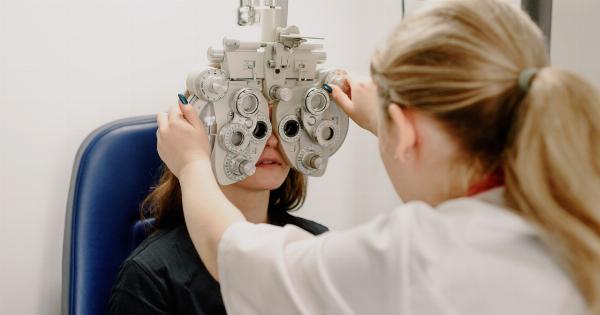Chronic dry eye, also known as dry eye syndrome, is a common eye condition that occurs when the eyes do not produce enough tears or the tears evaporate too quickly. This can lead to discomfort, irritation, and in some cases, vision problems.
While there is no cure for chronic dry eye, there are several effective techniques that can help manage the condition and alleviate symptoms. In this article, we will discuss six techniques that have been proven to be effective in managing chronic dry eye.
1. Use Artificial Tears
Artificial tears are over-the-counter eye drops that can provide temporary relief for dry eye symptoms. They work by lubricating the surface of the eye and moisturizing the surrounding tissues.
It is important to choose artificial tears that are preservative-free, as preservatives can sometimes irritate the eyes. Applying artificial tears several times a day can help keep the eyes lubricated and reduce dryness and irritation.
2. Practice Proper Eyelid Hygiene
Proper eyelid hygiene can help manage chronic dry eye by reducing the buildup of bacteria and oils around the eyes.
To practice proper eyelid hygiene, use a gentle cleanser or baby shampoo diluted with water to clean the eyelids and remove any debris or excess oils. Be sure to use a clean, soft cloth or cotton swab to avoid introducing any additional irritants. Regularly cleaning the eyelids can help improve tear production and reduce dryness.
3. Use a Humidifier
Dry air can exacerbate the symptoms of chronic dry eye. Using a humidifier can help add moisture to the air and prevent the eyes from drying out.
Place a humidifier in the rooms where you spend the most time, such as the bedroom or office, and set it to a comfortable humidity level. This can help reduce dryness and irritation in the eyes, especially in dry climates or during the winter months when the air is typically drier.
4. Take Regular Breaks from Screens
Staring at screens for extended periods can cause dry eyes due to decreased blinking and increased evaporation of tears. To manage chronic dry eye, it is important to take regular breaks from screens and give your eyes a chance to rest and rehydrate.
Follow the 20-20-20 rule: every 20 minutes, look at an object 20 feet away for 20 seconds. This can help reduce eye strain, improve blinking, and prevent dryness.
5. Avoid Environmental Triggers
Environmental triggers such as wind, smoke, and air pollution can worsen the symptoms of chronic dry eye. To manage the condition effectively, it is important to avoid these triggers as much as possible.
When outdoors on windy days, wear wraparound sunglasses or protective eyewear to shield the eyes from dry air. Avoid exposure to smoke and try to stay in well-ventilated areas. Taking these precautions can help minimize dryness and irritation.
6. Consider Prescription Medications or Procedures
In some cases, over-the-counter treatments may not provide sufficient relief for chronic dry eye. In such situations, it may be necessary to explore prescription medications or procedures.
Your eye care professional might prescribe medications, such as cyclosporine or lifitegrast, to reduce inflammation and promote tear production. Additionally, procedures like punctal plugs, which involve inserting small plugs into the tear ducts to prevent tears from draining away, may be recommended for more severe cases.
Conclusion
Managing chronic dry eye can be a challenging task, but with the right techniques, it is possible to alleviate symptoms and improve comfort.
By using artificial tears, practicing proper eyelid hygiene, using a humidifier, taking regular breaks from screens, avoiding environmental triggers, and considering prescription medications or procedures when necessary, individuals with chronic dry eye can effectively manage their condition and enjoy better eye health.




























